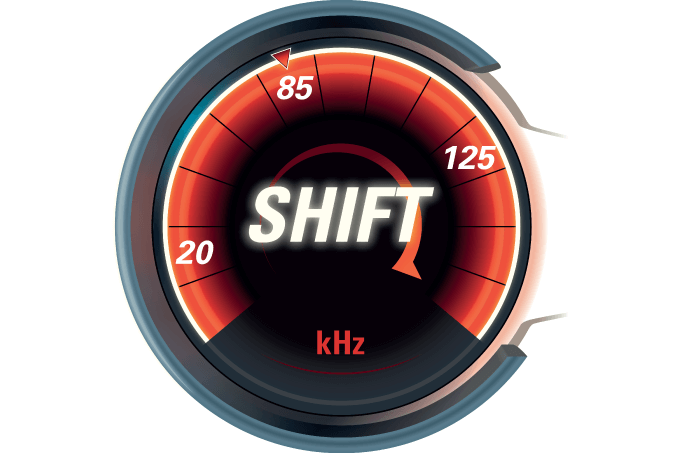
Introduced in the 1990s, optical coherence tomography (OCT) has been a game changer for both eye care professionals and patients worldwide. And, ever since its launch, Heidelberg Engineering’s SPECTRALIS® – a high-resolution SpectralDomain OCT – has stood out as a pioneer thanks to its multimodal diagnostic capability. Indeed, SPECTRALIS OCT technology is renowned for high-quality images with excellent detail, contrast, and reproducibility. But Heidelberg Engineering had no time for complacency, instead announcing the latest OCT development leap for SPECTRALIS with its revolutionary SHIFT technology. Curious? You should be.
Put simply, SHIFT enables clinicians to switch between OCT scan speeds for an individualized assessment of each patient. This addition to the SPECTRALIS delivers improved performance by offering different A-scan rates for different applications to achieve optimal image quality, while also improving clinical workflow. Standard presets – 125 kHz for OCT angiography (OCTA) and 85 kHz for structural OCT – allow clinicians to complete their daily routine more efficiently. When required, clinicians can speed up or slow down image acquisition, offering flexibility during each examination.


With an ideal speed-quality ratio for structural OCT imaging, the 85 kHz scan speed strikes the correct balance between efficient workflow and meaningful images to achieve ideal outcomes. The measurements are reliable and the images stunning across all applications and scan patterns. The 85 kHz scan speed sets the standard for advanced diagnostics in multiple areas, for example, glaucoma assessment using the Glaucoma Module Premium Edition. Furthermore, cross-sectional en-face images with lateral resolution of 6 microns allow the visualization of vascular structures and nerve bundles, helping you detect the extent of pathologic structural changes within the retina. The combination of new components within the next generation SPECTRALIS platform creates synergies that significantly increase efficiency in both OCT and OCTA and deliver images with more detail. But with two additional scan speeds – 125 kHz and 20 kHz – SHIFT technology offers new options and advantages for retinal imaging.
Want to go faster? SHIFT up a gear! The 125 kHz scan speed for OCTA allows for rapid acquisition of images visualizing blood flow and slashes acquisition time by up to www.theophthalmologist.com Sponsored Section 31 30 percent. The resulting OCTA images are as clear as those captured with an A-scan rate of 85 kHz, without any clinically relevant loss in image quality despite the increased scanning speed. In fact, the accelerated speed helps minimize natural eye motion effects – an advantage when capturing images to visualize flow.


Need to slow down for a bump in the road? No problem, SHIFT back down to 85 kHz to boost image quality for OCTA imaging in cases that need longer light exposure.
Acquisition of structural OCT images is set to the recommended 85 kHz A-scan rate, delivering the excellent image quality you love and expect from your SPECTRALIS; however, in cases of good fixation and illumination, structural OCT can also be sped up to 125 kHz to increase workflow efficiency.
Navigating a tortuous mountain path? SHIFT right down to an A-scan rate of 20 kHz for optimal signal-to-noise ratio. Imaging with 20 kHz is far more sensitive than the standard 85 kHz and improves image quality in eyes with opacities, such as cataract, corneal edema, or dense floaters. As a result, you can acquire clinically meaningful OCT scans for challenging eyes that you never thought possible.
With SHIFT technology, you can choose the most suitable OCT scan speed for each individual patient. Standard settings ensure efficient workflow, while you benefit from a higher degree of flexibility in image acquisition to achieve optimal quality. With full backward compatibility of existing patient data and functionality, SHIFT easily integrates into existing clinical infrastructures.
In short, the three A-scan rates accessible through SHIFT technology deliver on three promises: optimized performance, optimized workflows, and customized patient care.
